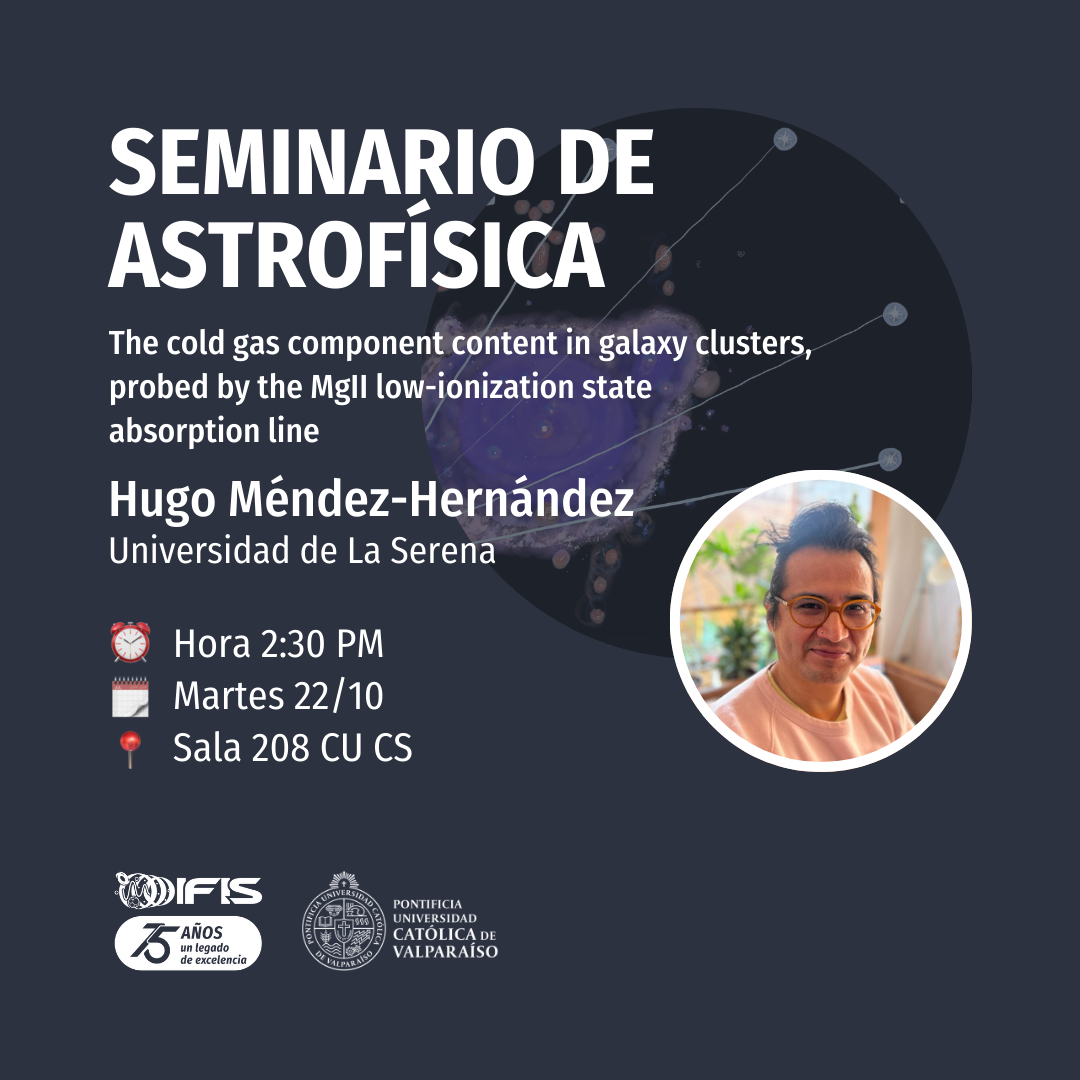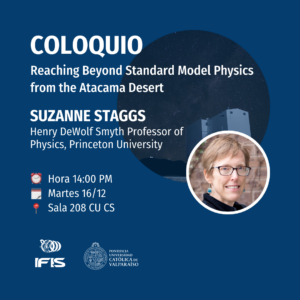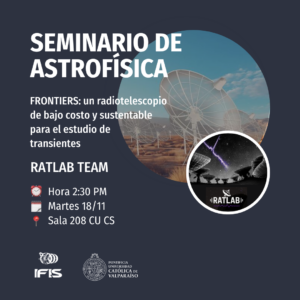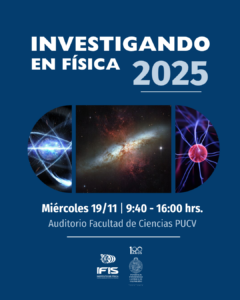
Seminario de Astrofísica en el IFIS. Este martes 22 de octubre, Hugo Méndez-Hernández de la Universidad de La Serena presenta “The cold gas component content in galaxy clusters, probed by the MgII low-ionization state absorption line” desde las 14:30 en la Sala 208 del Instituto de Física PUCV.
Compartimos el abstract del seminario:
Absorption lines observed in quasi-stellar objects (QSOs) spectra can be associated with gas around galaxies, producing strong Lyα, C IV and other lines (Bahcall and Spitzer 1969, Lanzetta et al., 1995; Chen et al., 1998). Thanks to their brightness, QSOs are typically used as background sources to probe the circumgalactic medium CGM around foreground galaxies (Bergeron & Boissé 1991; Steidel et al. 1994; Kacprzak et al. 2010), allowing to identify the signal produced by extremely low column densities (NHI~10-12 cm^-2), independent of the properties of the targeted galaxy (e.g. luminosity, redshift) (Tumlinson et al. 2017; Péroux & Howk 2020). Since then, QSOs have been extensively used to study the CGM at low and high redshifts (e.g. Steidel et al.2010; Kacprzak et al. 2010). The CHileAN Cluster galaxy Evolution Survey, will study the evolution of galaxies in and around ~ 150 massive galaxy clusters, from the local Universe out to z ~ 0.45. It will target ~ 300 000 rAB < 20.5 galaxies with 4MOST, providing comprehensive spectroscopic coverage of each cluster out to 5r200 split into three different subsurveys i) CHANCES-low-redshift, ii)CHANCES-evolution and iii) CHANCES-CGM. The CHANCES-CGM subsurvey will observe ~9.000 low-redshift Quasars background sources (z>0.35) probing the tenuous gas envelopes around galaxy Clusters (QbC) through MgII (λλ 2796, 2803) low-ionization state absorption line. Galaxies inhabiting dense environments have experienced cold gas stripping and are surrounded by gas at a much higher temperature, with a reduced star formation. Thus it is expected that galaxies closer to the cluster centre with lower gas content will exhibit lower MgII absorptions, opposite to galaxies at large cluster-centre distances with larger gas content. In this content I will first introduce the CHANCES-CGM subsurvey, explain its selection criteria and using a subsample of ~200 low-redshift QSOs-clusters pairs covering both the northern and southern hemisphere I will present preliminary results of a pilot study οf the MgII absorption strength as a function of cluster-centric radii presence of MgII absorptions. This will provide us insights on what we might expect from the CHANCES-CGM subsurvey observations.



